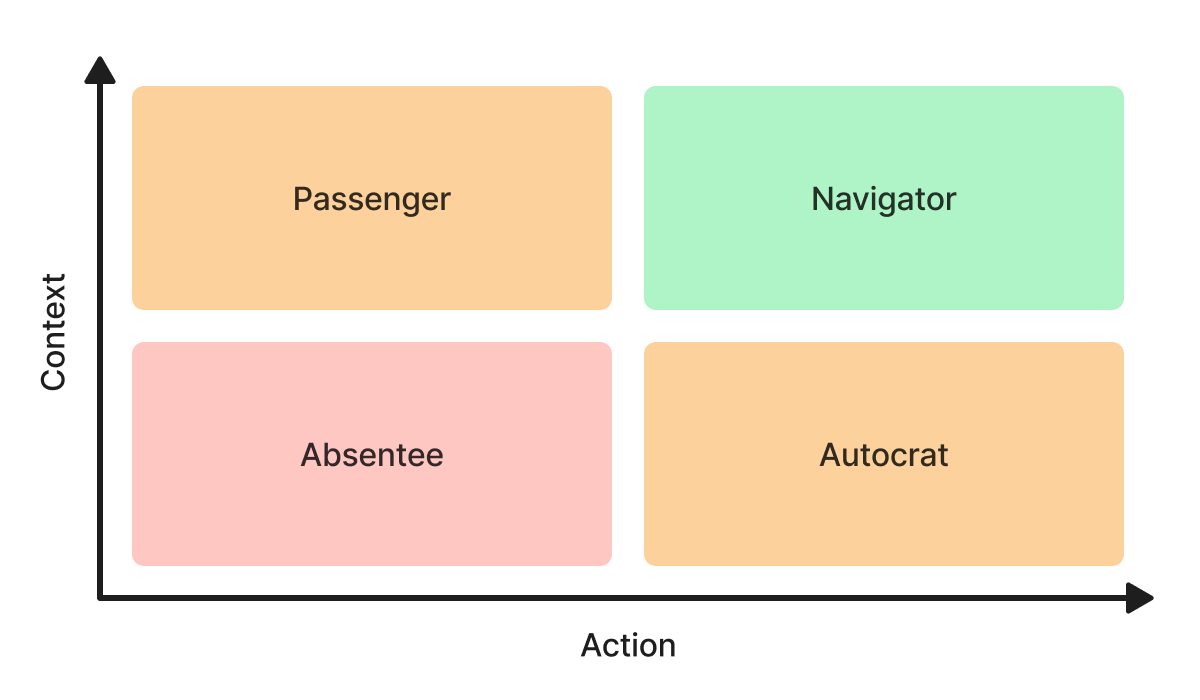My role at Monzo has evolved from leading teams directly to managing managers and supporting engineering across our Core Banking collective. I’ve hired two engineering managers in the process. Onboarding managers is nothing like onboarding software engineers. For one thing, the stakes are higher. A new manager can help a team realise its full potential, or they can cause it to stall completely.
So how do you set an engineering manager up for success? My approach is to be prescriptive about what to focus on for the first 3 weeks. After that, I ask the new manager to draft a plan based on everything they’ve learned so far. The goal is to set them up with the tools to drive their own onboarding process.
Just enough of a plan
It all starts with an onboarding guide. I like to set the scene by describing the most ambitious version of the role (hopefully we hired an EM because they can have a meaningful impact on the business). However, the bulk of the content is a simple checklist to guide their first few weeks:
- Essential documents: strategy, goals, roadmaps, technical proposals, and a description of how their team fits into the broader organisation.
- People to meet: their future direct reports, partners like product managers, the team’s stakeholders, and some peers in the same role.
- Meetings to start attending: planning, standups, retrospectives, etc.
The onboarding guide balances two equal priorities:
- Investing in the relationships that will make the EM successful in the long run.
- Becoming embedded in the team’s workflow and absorbing enough context to start adding value as soon as possible.
Joining a new organisation can be intense. This immersion phase needs to make room for company-wide onboarding sessions and flex to the specific needs of the team: should the EM focus more on understanding strategy, improving team health, or getting to grips with the technical domain?
Ownership
Engineering managers need to operate with high autonomy. I want to instill this mindset early, so I ask the EM to build a 30/60/90 plan in week 4. This delegates ownership of the rest of the onboarding process, but having the plan on paper helps me understand where they’re going to invest their energy. If we agree, they have license to go and execute.
If we disagree, this exercise clearly highlights the diff between their priorities and mine. The question becomes: do I provide more steer based on my own experience, or bet on the wisdom of a fresh pair of eyes?
I want to make sure the new EM gets enough space to adapt their individual leadership style to suit the needs of the team. It’s easy to add more structure and support incrementally if necessary. It doesn’t work the other way around. Being too prescriptive for too long will stifle ownership and creativity.
Expectations
Let’s return to the onboarding guide. There’s another important component: expected outcomes. What does success look like in this role? I’m not trying to rehash our progression framework but rather to put those expectations in context with my understanding of the team, the people, and what’s achievable within the time constraints of probation.
Importantly, I’m describing the destination, not the route. For example, I won’t go into detail on manager handovers because they’re situational, but I’d expect a new EM to be supporting their full reporting line within 3 months. I keep an open dialogue on the journey towards these outcomes and help gather feedback from their peers and direct reports. I’m looking for a range of different signals, depending on the scope of the role. Some common themes include:
- Developing a product/engineering partnership
- Running productive meetings and iterating on team processes
- Guiding the team to impactful work
- Building pace and quality into the delivery process
- Advocating for technical excellence
I don’t necessarily look for people management outcomes this early. Engagement, performance, and progression play out over months or years. However, I do expect to see good 1:1 hygiene and signs that the EM is building trust with their direct reports. Even in companies with healthy feedback cultures, people tend to give their managers the benefit of the doubt, so I’m looking for a few strong advocates over a unanimous gentle nod.
Failure modes
Managers build the conditions for success in a team. That means making interventions (like challenging a hasty trade-off decision, improving a rusty process, or filling a staffing gap). But if you’re brand new, when do you know enough to make the right changes? This framework sparks great conversations.

There are two extremes to avoid:
- Observing for too long without building the confidence and trust to drive change, eventually becoming a passenger (or figurehead).
- Rushing to make changes in an attempt to recreate the conditions that made a previous team successful.
Sometimes there are reasons to observe for longer. Other times the situation requires swift action. By the end of the onboarding process, the EM should be a navigator: using their deep understanding of the team and domain to take actions that have predictable, positive effects.
Summary
Let’s distil everything into a 3 step process:
- Immerse the new EM in their team with direction on what information to absorb, which relationships to invest in, and your expectations for the role.
- Delegate ownership of the onboarding process, but ensure the new EM’s priorities gel with your own analysis of team needs.
- Collect feedback from multiple directions, ensuring the new EM graduates out of observation mode and starts taking well-reasoned action.